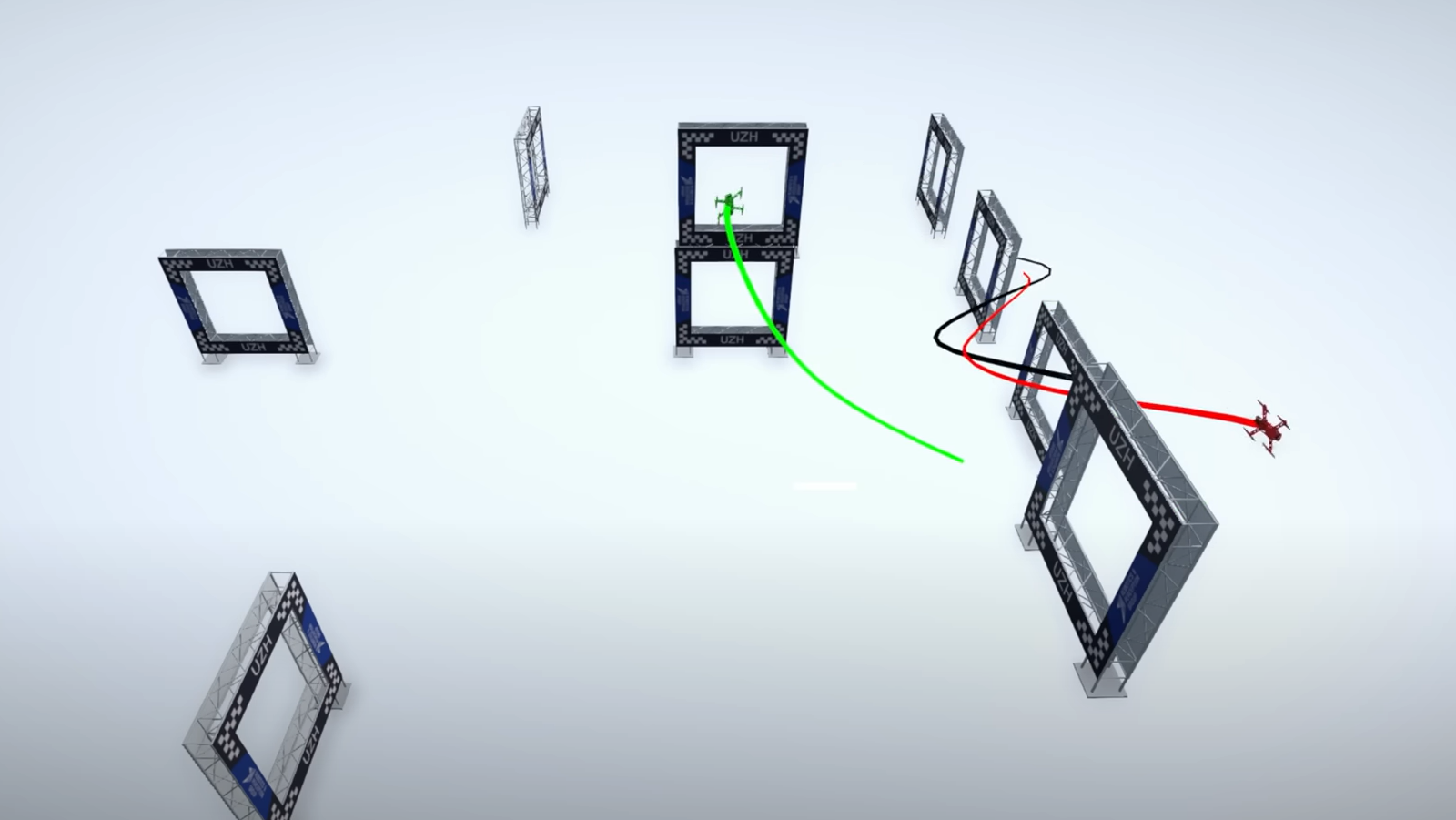human vs. AI Drone Racing at the University of Zurich
[Thomas Bitmatta] and two other champion drone pilots visited the robotics and perception group at the University of Zurich. Human pilots accepting the challenge of flying drones against Artificial Intelligence "pilots" from the UZH research group.
The human pilots faced two different types of AI challengers. The first type operates 36 tracking cameras positioned above the flight arena. Each camera captures 400 frames per second of video. The AI-driven drone is equipped with at least four tracking markers that can be identified in captured video footage. The captured video is fed into a computer vision and navigation system which analyzes the video to calculate flight controls. Flight commands are then transmitted to the drone over the same wireless control channel that would be used by a human pilot's remote control.
The second type of AI pilot uses an on-board camera and autonomous machine vision processing. The "vision drone" is designed to take advantage of the visual perception of the camera with little or no help from external computing power.
Ultimately, human pilots were victorious over both types of AI pilots. AI systems do not (yet) adapt robustly to unexpected deviations from optimal conditions. Small variations in operating conditions often lead to errors and fatal accidents for AI pilots.
Both AI pilot systems use some of the latest machine learning and neural network research to learn how to pilot a given track. Systems train for a track using a combination of simulated environments and actual flight deployments. In their final hours together, the university research team invited the human pilots to set up a new course for a final race. In less than two hours, the AI system trained to follow the new course. In the actual flight of the resulting AI drone, its performance was quite impressive and holds great promise for the future of autonomous flight. We bet on robots soon.

[Thomas Bitmatta] and two other champion drone pilots visited the robotics and perception group at the University of Zurich. Human pilots accepting the challenge of flying drones against Artificial Intelligence "pilots" from the UZH research group.
The human pilots faced two different types of AI challengers. The first type operates 36 tracking cameras positioned above the flight arena. Each camera captures 400 frames per second of video. The AI-driven drone is equipped with at least four tracking markers that can be identified in captured video footage. The captured video is fed into a computer vision and navigation system which analyzes the video to calculate flight controls. Flight commands are then transmitted to the drone over the same wireless control channel that would be used by a human pilot's remote control.
The second type of AI pilot uses an on-board camera and autonomous machine vision processing. The "vision drone" is designed to take advantage of the visual perception of the camera with little or no help from external computing power.
Ultimately, human pilots were victorious over both types of AI pilots. AI systems do not (yet) adapt robustly to unexpected deviations from optimal conditions. Small variations in operating conditions often lead to errors and fatal accidents for AI pilots.
Both AI pilot systems use some of the latest machine learning and neural network research to learn how to pilot a given track. Systems train for a track using a combination of simulated environments and actual flight deployments. In their final hours together, the university research team invited the human pilots to set up a new course for a final race. In less than two hours, the AI system trained to follow the new course. In the actual flight of the resulting AI drone, its performance was quite impressive and holds great promise for the future of autonomous flight. We bet on robots soon.
What's Your Reaction?






















